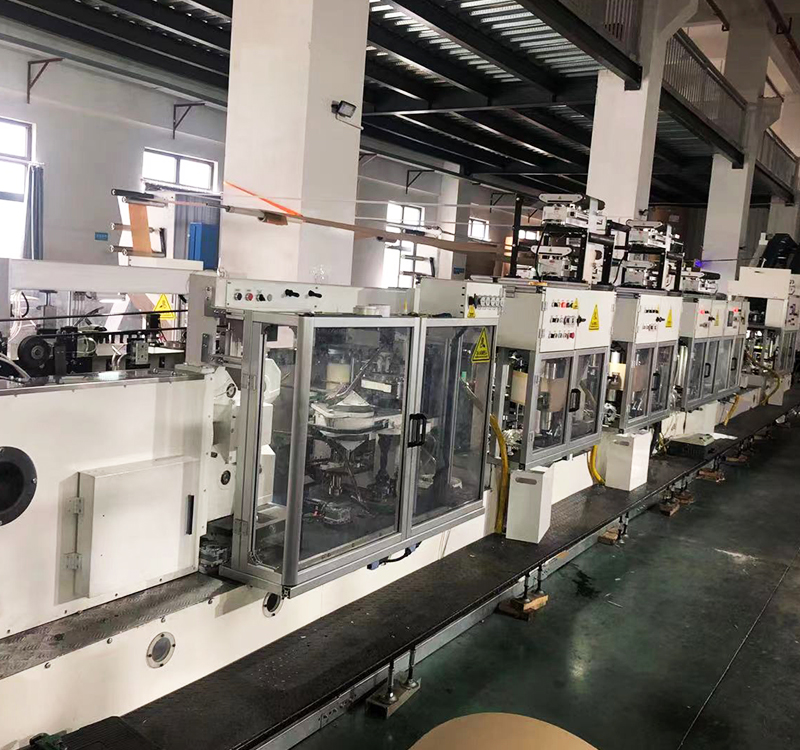The Evolution and Operational Excellence of Modern Rotogravure Paper Bag Machines
Release time:2025-05-27 Classification:Knowledge
The production of high-quality, visually appealing paper bags has become a cornerstone of sustainable packaging solutions across industries. At the heart of this process lies the rotogravure paper bag machine—a sophisticated piece of equipment designed to merge precision printing with efficient bag manufacturing. This article explores the technical advancements, operational mechanics, and industry applications of rotogravure paper bag machines, highlighting their role in meeting modern packaging demands.

Understanding Rotogravure Printing Technology
Rotogravure, a high-speed intaglio printing method, employs engraved cylinders to transfer ink onto substrates. When integrated into paper bag production, this technology enables intricate, high-resolution designs with consistent color reproduction. The rotogravure paper bag machine combines this printing capability with automated bag-forming processes, ensuring seamless transitions from raw paper rolls to finished products.
Key components of these machines include:
- Engraved Cylinders: Laser-etched to micron-level precision for detailed artwork replication.
- Inking Systems: Closed-circuit designs that minimize waste and ensure uniform ink distribution.
- Drying Tunnels: Rapid-curing mechanisms to accelerate production without compromising print quality.
- Bag-Forming Units: Modular systems for folding, gluing, and cutting paper into bags of varying sizes.
Advantages of Rotogravure Paper Bag Machines
- Superior Print Quality
Rotogravure’s ability to handle complex gradients and fine lines makes it ideal for luxury branding. Metallic inks, embossing effects, and high-density pigments are effortlessly integrated, catering to premium packaging requirements. - High-Speed Production
Modern machines achieve speeds exceeding 200 meters per minute, translating to outputs of 300–500 bags per minute depending on size and design complexity. This efficiency addresses bulk-order demands while maintaining consistency. - Material Versatility
These systems accommodate diverse substrates, including kraft paper, laminated films, and recycled materials. Adjustable tension controls and temperature settings ensure optimal performance across material grades. - Sustainability Integration
Advanced models incorporate solvent recovery systems and low-VOC inks, aligning with eco-friendly manufacturing standards. Energy-efficient motors and reduced waste algorithms further enhance their environmental profile.
Technical Innovations Driving the Industry
Recent advancements in rotogravure paper bag machinery focus on automation and smart manufacturing:
- AI-Powered Defect Detection: Real-time vision systems identify print flaws or misalignments, triggering automatic corrections.
- Predictive Maintenance: IoT-enabled sensors monitor component wear, reducing unplanned downtime.
- Quick-Change Systems: Modular cylinders and automated ink dispensers enable rapid design swaps, ideal for short-run customized orders.
- Hybrid Printing Options: Some models combine rotogravure with digital units for variable data printing, such as QR codes or batch numbers.
Applications Across Industries
Rotogravure-printed paper bags serve diverse sectors:
- Retail: Durable, eye-catching bags for apparel, cosmetics, and gift packaging.
- Food Service: Grease-resistant variants with FDA-compliant inks for takeaway orders.
- Pharmaceuticals: Anti-static options with tamper-evident features.
- Industrial Packaging: Heavy-duty designs for hardware or automotive parts.
Quality Control and Compliance
Reputable manufacturers adhere to ISO 9001 and ISO 14001 standards, implementing rigorous testing protocols:
- Tensile Strength Tests: Ensuring handles withstand 6–10 kg loads.
- Ink Adhesion Checks: Cross-hatch tests verify print durability under friction.
- Food Safety Certifications: Migration tests for inks used in direct-contact packaging.
Future Trends and Market Outlook
As global demand for sustainable packaging grows, rotogravure paper bag machines are evolving to support:
- Biodegradable Coatings: Water-based barriers replacing traditional plastics.
- Smart Packaging Integration: Conductive inks enabling NFC-enabled bags.
- Energy Recovery Systems: Heat recapture from drying tunnels to power adjacent units.
The rotogravure paper bag machine represents a fusion of artistry and engineering, delivering both aesthetic excellence and functional reliability. With continuous innovations in automation, sustainability, and material science, these systems are poised to remain indispensable in the packaging sector. Manufacturers seeking to balance speed, quality, and environmental responsibility will find rotogravure technology a compelling solution for years to come—a testament to its adaptability in an era where packaging speaks volumes about brand values.






